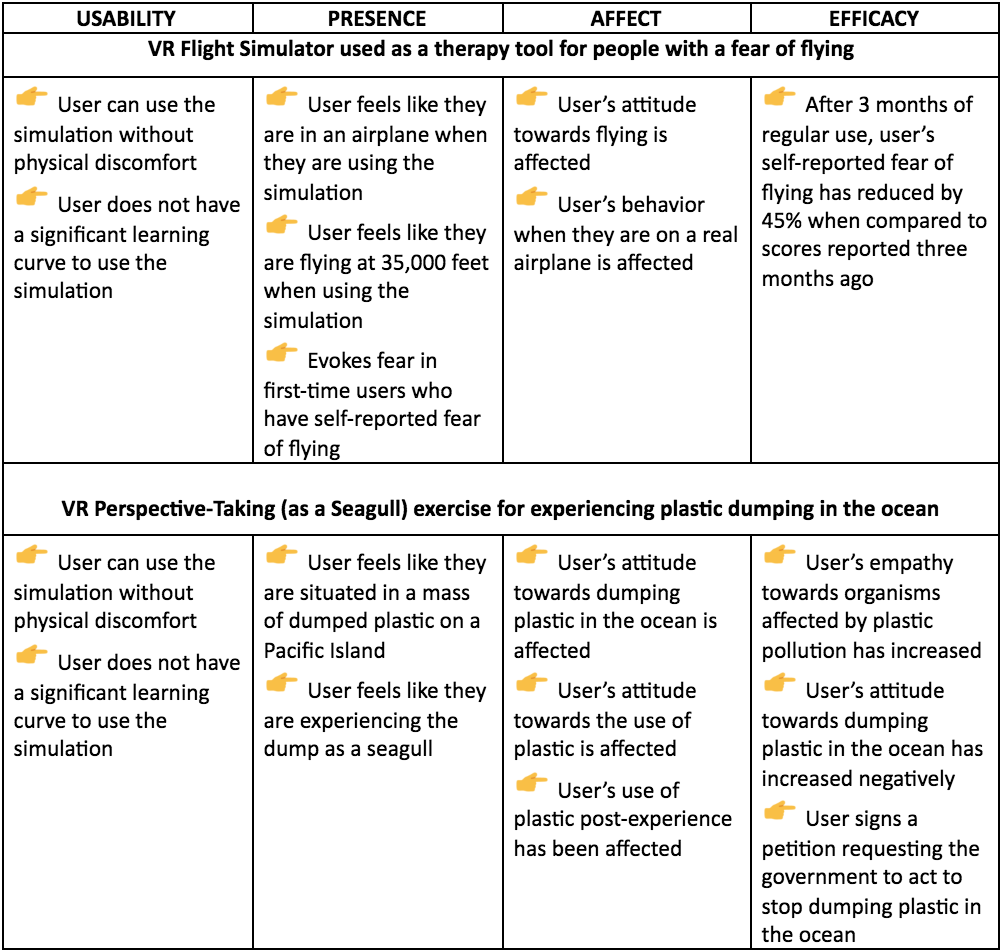
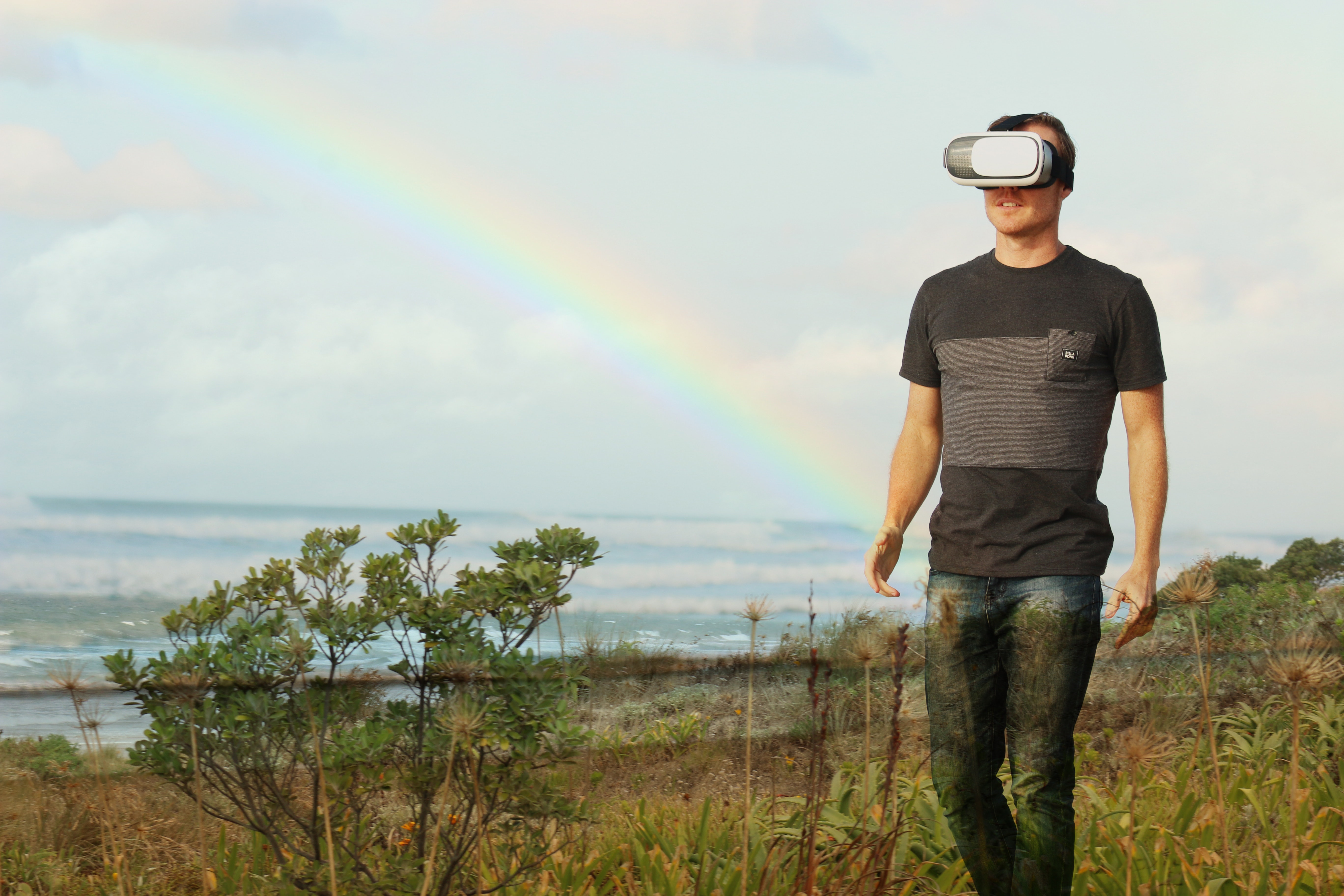 Virtual Reality today is truly off-the-shelf – the tools required for developing, disseminating and consuming a VR experience is available, accessible and affordable. This progress has enabled not only programmers but also technology novices to create significant immersive experiences. However, one of the major pieces missing in this field is a robust design and evaluation methodology that ensures that the experiences we create are not only immersive and interactive but also impactful.
Virtual Reality today is truly off-the-shelf – the tools required for developing, disseminating and consuming a VR experience is available, accessible and affordable. This progress has enabled not only programmers but also technology novices to create significant immersive experiences. However, one of the major pieces missing in this field is a robust design and evaluation methodology that ensures that the experiences we create are not only immersive and interactive but also impactful.
In order to establish a robust “design – develop – feedback” loop, it is necessary to first identify the parameters of success for the simulation being developed. While the goal for all products is to be commercially successful and/or useful to mankind, we can break down the measures of success for our proposed immersive experience into four levels:
Metric 1 - USABILITY: Can users use the simulation as intended by the developers?
Are there challenges to users using the simulation without physical or mental discomfort?
Are the users able to learn how to interact and navigate within the virtual environment without a significant learning curve?
Metric 2 - PRESENCE: Does the simulation make the user feel present in the environment that was intended?
How present does the user feel?
What components of the simulation make the user feel more present?
What components of the simulation make the user feel less present?
Metric 3 - AFFECT: Does the simulation significantly affect the user’s attitude, cognition or behavior?
Does experiencing the simulation affect the user’s attitude – user’s feelings about something or someone?
Does experiencing the simulation affect the user’s cognition – user’s knowledge about something or someone?
Does experiencing the simulation affect the user’s behavior – user’s actions with respect to something or someone?
Metric 4 - EFFICACY: Does the simulation help the user achieve the end goal intended for the immersive experience?
Note: The end goal could be learning, training, entertainment, therapy or communication!
For Training Applications:
Does the user learn the skill or concept?
How much does the user learn?
How quickly does the user learn?
For Entertainment Applications:
Does the user feel engaged?
Does the user find the experience enjoyable?
How engaged? How enjoyable?
These are the four fundamentals that form the basis of any immersive experience evaluation roadmap – USABILITY, PRESENCE, AFFECT and EFFICACY. Ideally, a successful VR product should answer yes to all the four fundamental questions listed above. To further illustrate how the evaluation roadmap for an immersive experience can be based on these four building blocks, I choose two VR applications and break down the success metrics for them. The simulations I have chosen are a VR flight simulator to be used as a therapy tool for people with a fear of flying and a perspective-taking experience where you are a seagull affected by the dumping of plastics in the oceans.
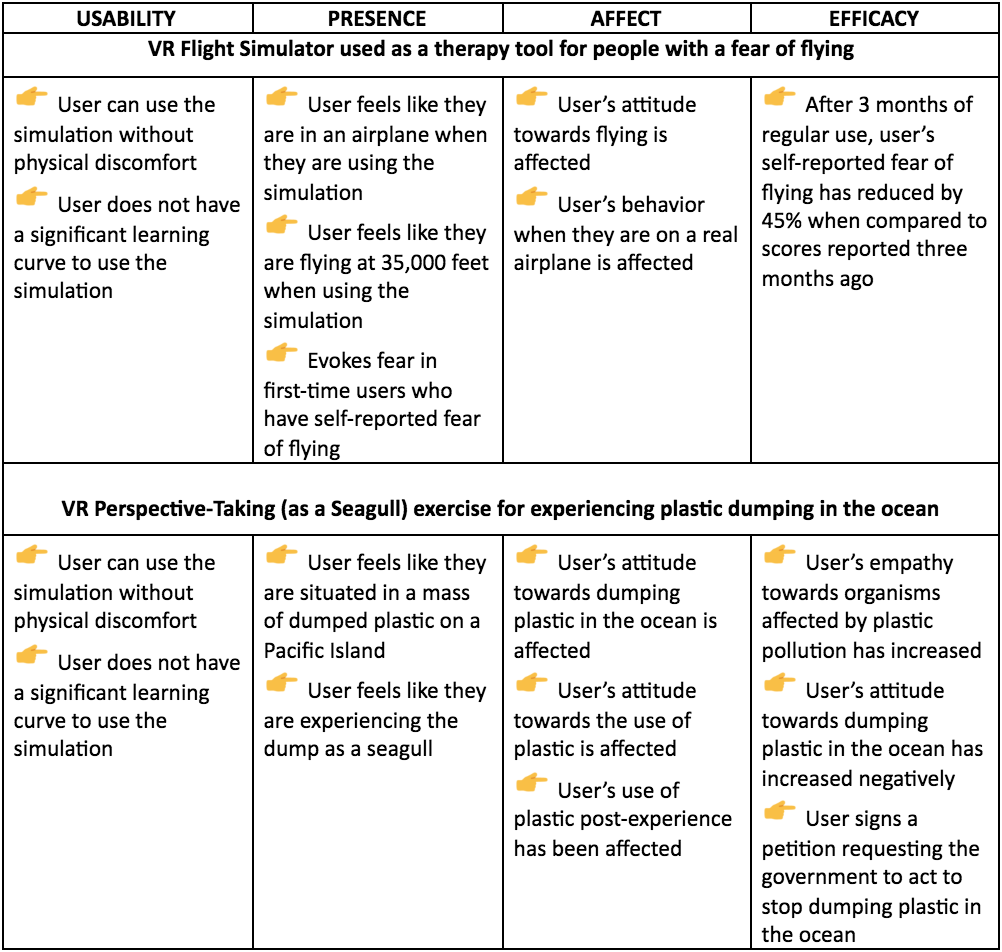
In certain cases, it would make sense to combine effect and efficacy testing under the same umbrella and just call it efficacy testing. Also, in most cases, affect testing might not look at all three constructs of attitude, cognition, and behavior – instead focus on only one or two of these constructs. For example, with a VR training program that is focused only on skills development, it might make sense to focus only on the effect on cognition.
In conclusion, evaluating your immersive experience involves a tiered-iterative approach that validates that the experience or simulation is usable, allows the user to feel present, affects the user positively and is effective.
Be sure to check out Effective VR UXR Part 1: The Science Behind Building Impactful Immersive Experiences.
READ MORE: The Power of User Culture Immersion, Designing for Millennials vs. Baby Boomers, What is Biometrics?, Takeaways From This Year's VRX Conference
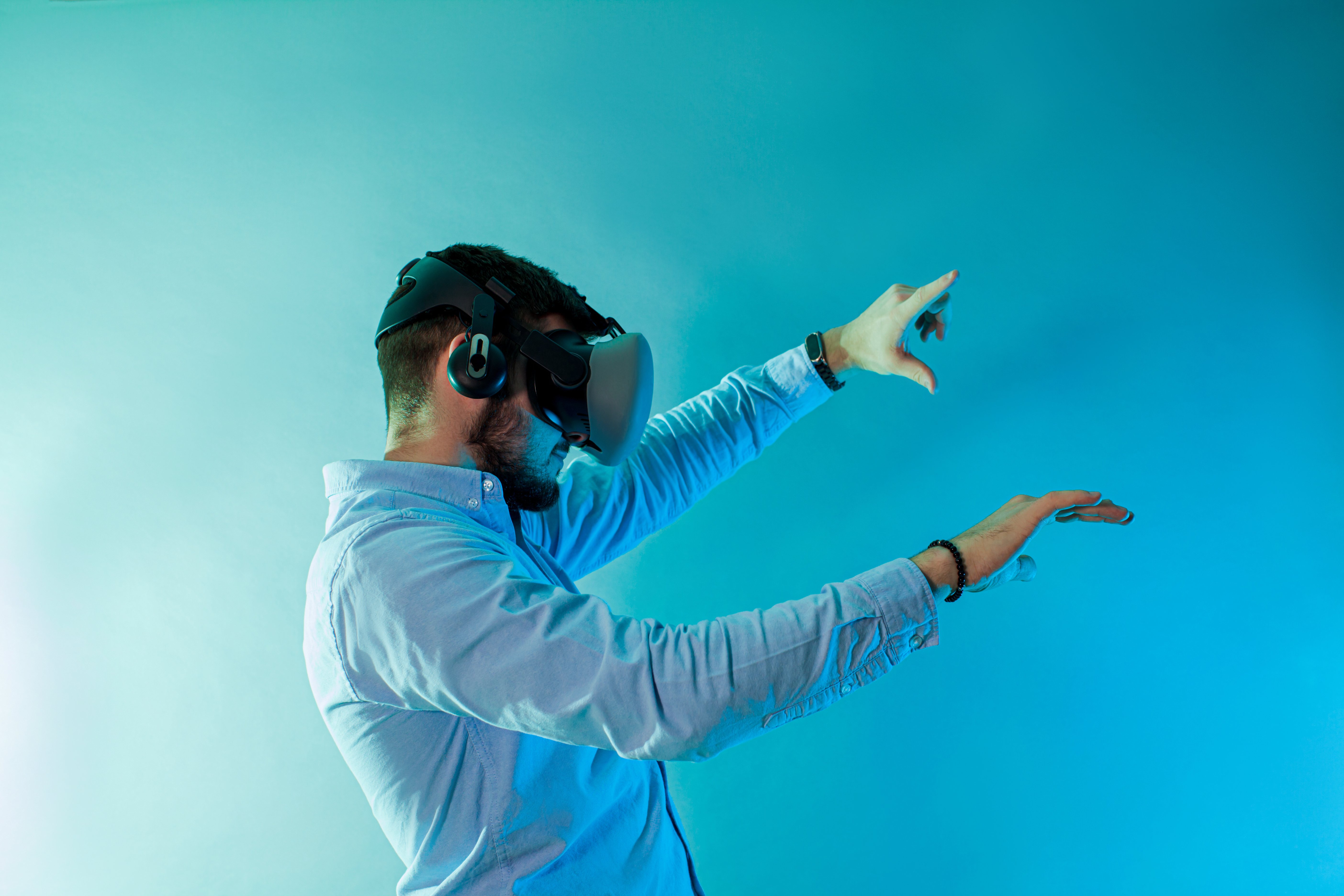
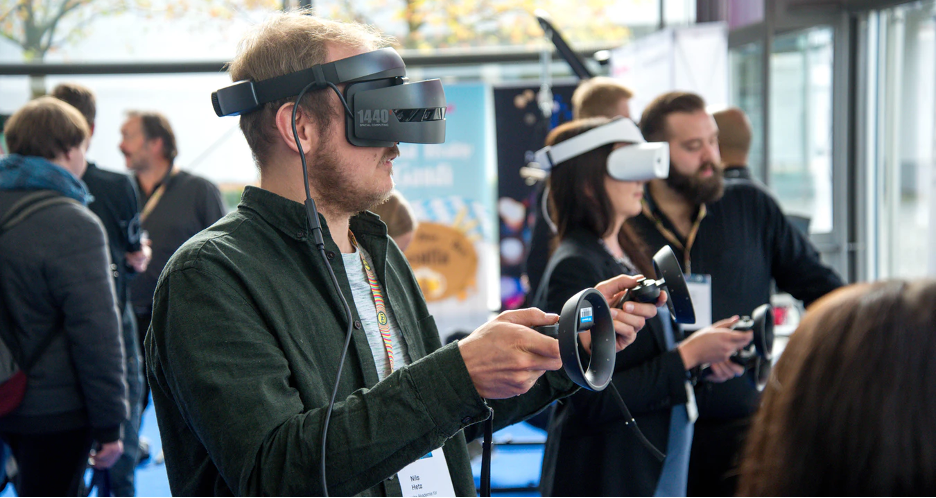
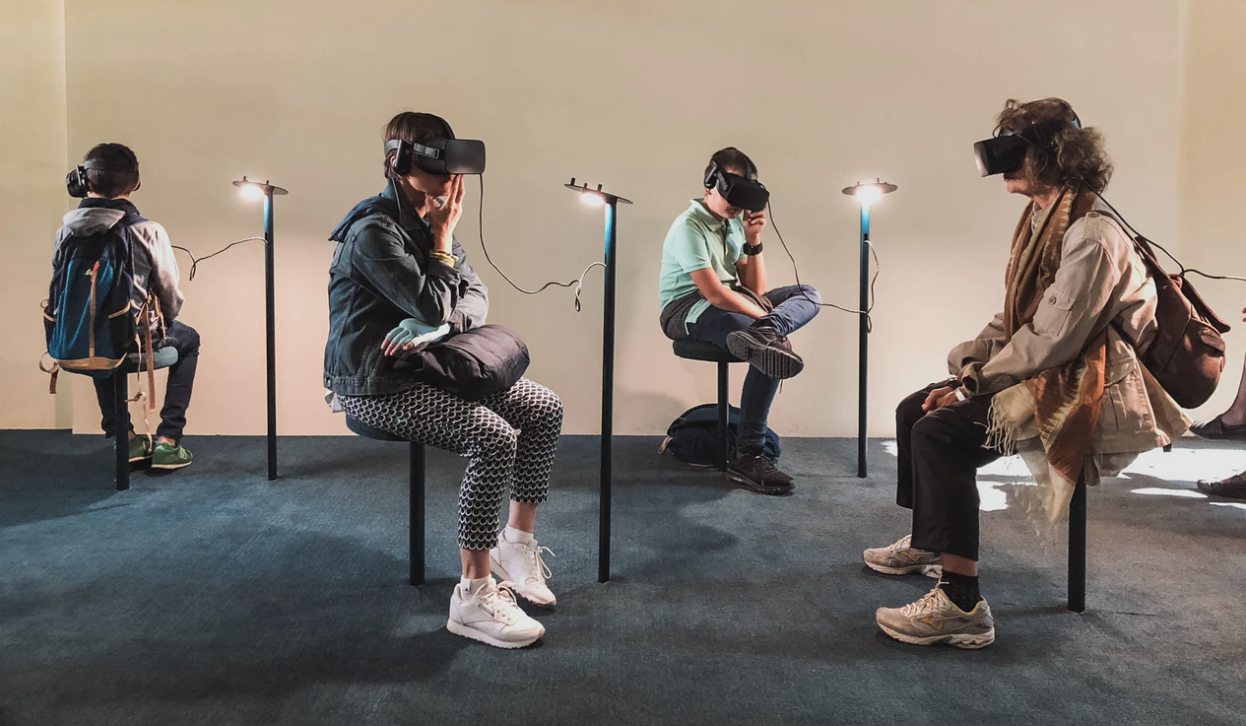







Comments
Add Comment